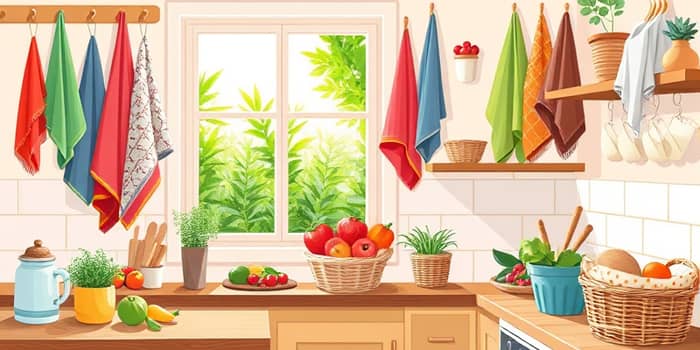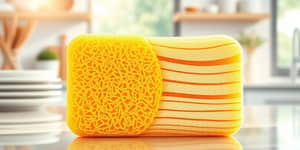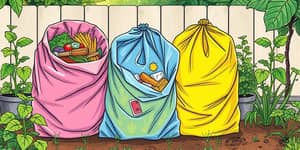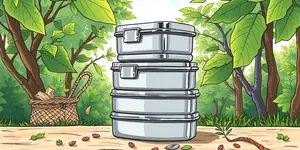Making the decision to swap disposable paper towels for reusable cloths can feel daunting at first. Yet this simple change unlocks a world of benefits for your wallet, home, and planet. In this comprehensive guide, you will discover the environmental advantages, cost impacts, practical tips, and inspiring reasons to embrace a greener kitchen routine.
Benefits of Switching to Reusable Cloths
One of the most compelling reasons to make the switch is the profound environmental impact. By choosing cloths over paper, you can reduce landfill waste and conserve natural resources on a massive scale. Paper towel production consumes thousands of gallons of water and leads to vast numbers of trees being cut down each year.
Beyond ecology, there are powerful financial incentives. Most households spend between $180 and $250 annually on disposable rolls. Investing in a set of quality cloths nearly eliminates this expense, delivering significant cost savings over time. Cloths become more absorbent with each wash, often outperforming disposables in strength and versatility.
Durability is another standout advantage. A single reusable cloth can withstand hundreds of washes, making it a machine washable and long-lasting cleaning companion. Many fabrics, like organic cotton or bamboo, even carry natural antibacterial properties, enhancing hygiene in your kitchen.
Choosing the Right Reusable Cloths
Selecting the ideal material ensures your cloths excel in absorbency and longevity. Consider these popular options:
- 100% cotton or linen: highly absorbent, durable, and soft.
- Bamboo fabric: naturally antibacterial and quick-drying.
- Cotton terry cloth: textured surface ideal for spills.
- Flannel: gentle on surfaces and excellent for polishing.
- Swedish dishcloths: cellulose-based, ultra-absorbent, and compostable.
Avoid synthetic blends that may shed microplastics and lose absorbency. Instead, aim for materials labeled low-impact or organic to maximize your eco-friendly footprint.
DIY and Purchasing Options
If you enjoy crafts, making your own reusable paper towels is both rewarding and cost-effective. Standard sizing around 11 inches square works well for most tasks. To create your own, follow these steps:
- Cut two matching fabric squares of your chosen material.
- Sew them right sides together, leaving a small opening.
- Turn the fabric right side out and topstitch around all edges.
- Optionally, add snaps or Velcro for easy roll dispensing.
Alternatively, many brands offer ready-made sets in attractive prints and colors. Look for labels that highlight more eco-friendly and versatile benefits, ensuring you choose a product built to last.
Care and Maintenance
Proper cleaning ensures your cloths remain sanitary and effective. Most reusable towels can be tossed into the washing machine with your regular laundry. For best results, wash at high temperatures with unscented, eco-friendly detergent to remove oils and residues.
After washing, air-dry or tumble-dry on low heat. Avoid fabric softeners, which can reduce absorbency. With consistent care, your cloths will continue to perform for years, yielding highly absorbent alternatives you can rely on day after day.
Transition Tips for a Smooth Switch
Shifting habits takes strategy. Follow these actionable steps to integrate cloths seamlessly into your routine:
- Start small by replacing paper towels in specific zones, like the kitchen sink or bathroom.
- Store cloths in accessible baskets, jars, or even an old paper towel holder.
- Keep a laundry-ready bin nearby for soiled cloths and wash them regularly.
- Personalize sizes and patterns to make the switch feel fun and intentional.
By phasing out one roll of paper at a time, you will soon find cloths are your go-to choice for virtually every cleanup task.
Addressing Common Myths and Concerns
Many hesitate, believing cloth towels are less hygienic than disposables. In reality, regular laundering at high heat effectively eliminates germs and odors. The myth that cloths spread bacteria can be dispelled by following recommended wash cycles.
Others worry about inconvenience. However, establishing a simple laundry routine and having a sufficient stash on hand makes maintenance effortless. Your initial investment pays off quickly, as you recoup expenses within a few months compared to recurring paper purchases.
Long-Term Impact and Sustainability
Over the lifespan of reusable cloths, the reduction in waste and resource use is staggering. Consider this comparison:
Beyond financials, the ecological savings manifest in fewer trees felled, less water consumed, and decreased landfill volume. Each cloth you reuse represents a tangible step toward a greener, more sustainable lifestyle.
Conclusion: Embracing a Greener Kitchen Routine
Replacing paper towels with reusable cloths is more than a household hack—it’s a meaningful commitment to environmental stewardship and smart living. You’ll enjoy durable cleaning solutions, impressive cost savings, and the satisfaction of reducing your waste footprint.
Start today by choosing one or two cloths and experiencing the ease and elegance they bring to everyday cleaning. Your kitchen—and the planet—will thank you for every cloth you reuse.
References
- https://zerowastestore.com/blogs/sustainable-living/benefits-of-switching-to-reusable-paper-towels
- https://ecoroots.us/blogs/blog/say-goodbye-to-single-use-with-reusable-paper-towels
- https://www.reelpaper.com/blogs/reel-talk/paper-towels-vs-cloth-towels
- https://www.consumerreports.org/appliances/paper-towels/best-paper-towel-alternatives-a3926616122/
- https://www.earthlyco.ca/blogs/small-changes-big-impact/6-reasons-to-switch-to-washable-paper-towels
- https://www.reelpaper.com/blogs/reel-talk/paper-towel-alternatives
- https://greenlight.com/learning-center/home-and-chores/how-to-make-reusable-paper-towels
- https://ecoboo.net/blogs/green-clean/case-study-the-impact-of-switching-to-reusable-paper-towels










